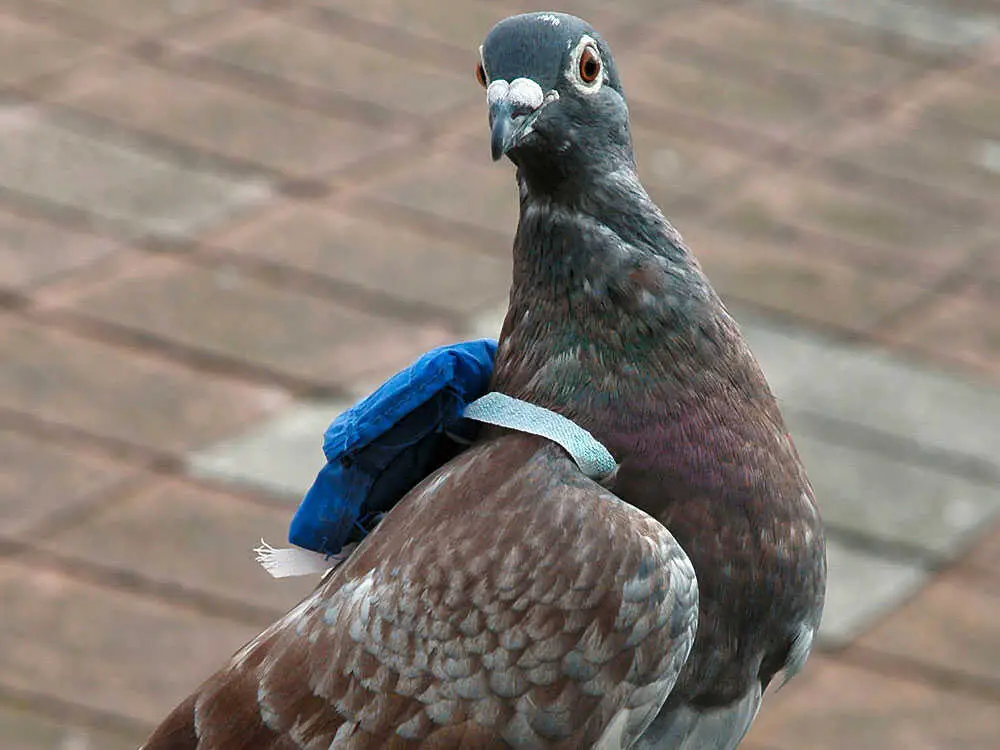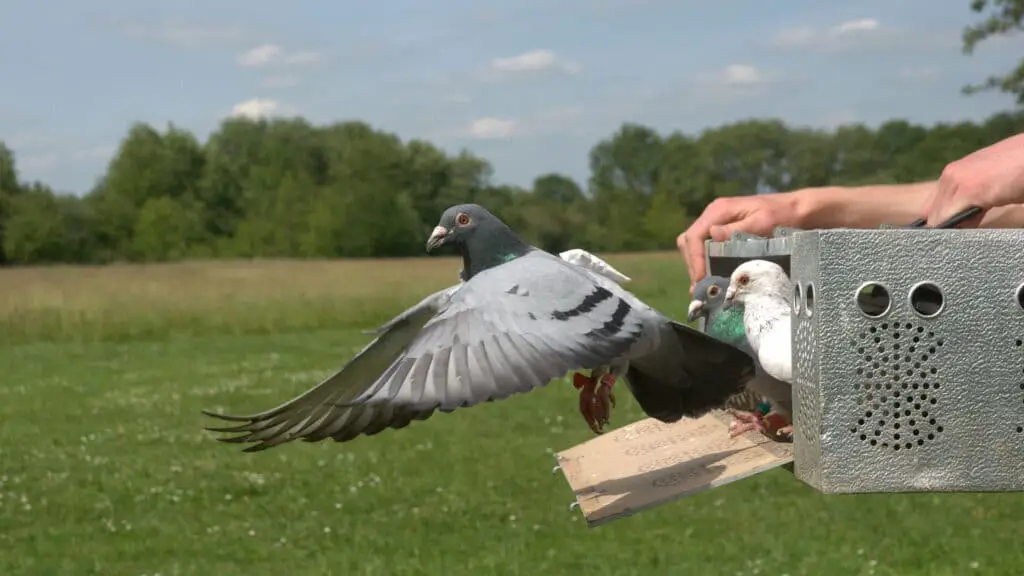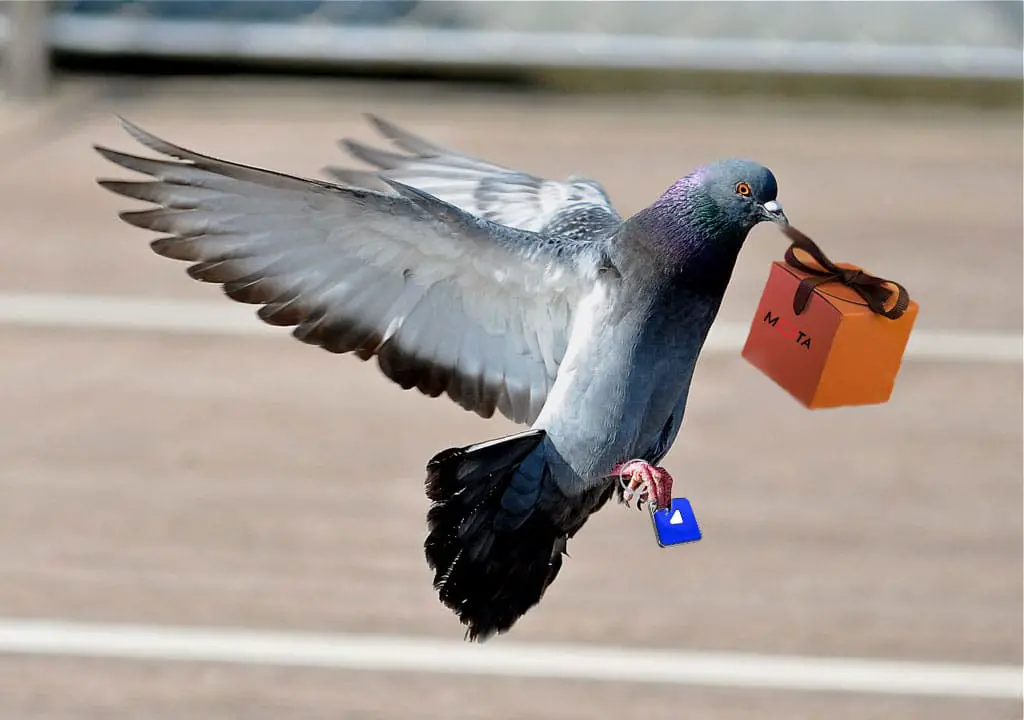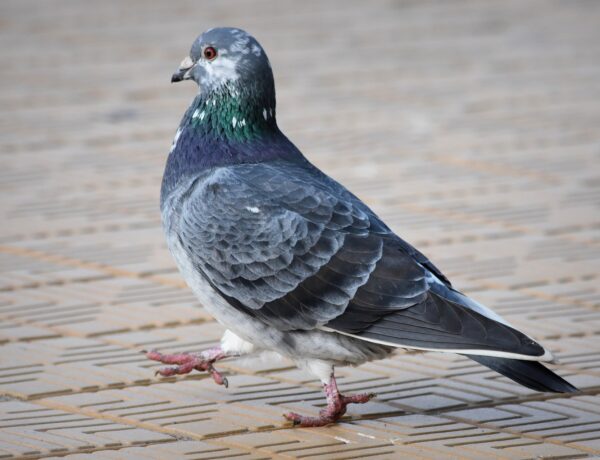Introduction
How Much Weight Can A Pigeon Carry: The seemingly ordinary pigeon, often dismissed as a ubiquitous city dweller, possesses surprising capabilities that extend beyond its reputation as a scavenger of urban crumbs. One of the intriguing questions surrounding these avian creatures pertains to their carrying capacity. Just how much weight can a pigeon carry? This inquiry delves into the realms of biology, physics, and behavioral adaptations, unraveling a tale of resilience and efficiency.
Pigeons have been domesticated and employed for various purposes throughout history, including as messengers in times of war. Understanding the limits of their load-bearing abilities not only sheds light on their physiological constraints but also provides insights into the intricate relationship between humans and these feathered companions. To explore the weight-carrying capacity of pigeons, one must delve into the anatomy and physiology that enable these birds to navigate the skies.
Despite their seemingly delicate appearance, pigeon hole possess robust musculature and efficient respiratory systems adapted for sustained flight. Their hollow bones, a characteristic feature shared with many avian species, contribute to a lightweight yet strong skeletal structure. Furthermore, pigeons are known for their exceptional homing abilities, and researchers have sought to harness their navigational skills for practical purposes. This exploration into their physical attributes unveils the potential factors influencing their capacity to carry loads, prompting a closer look at the science behind these unassuming yet remarkable creatures.

How much can a pigeon hold?
With training, pigeons can carry up to 75g (2.5 oz) on their backs, and they have been used for communication for a very long time, especially in China. In ancient Egypt, people used pigeons to send messages home from ships at sea.
Pigeons are not known for their strength in holding or carrying heavy objects. Their anatomy is adapted for flight, and while they can carry small objects in their beaks, their ability to hold or carry significant weight is limited. Pigeons have relatively small beaks and lack the gripping strength seen in birds of prey that are designed for carrying larger loads.
In historical contexts, pigeons were used as messengers, carrying lightweight messages tied to their legs. This was a testament to their homing abilities and their capacity to cover long distances, not their strength in carrying heavy objects.
If you need an animal for carrying or holding heavier objects, other species may be better suited for such tasks. Pigeons are more appropriately appreciated for their flight capabilities, navigational skills, and historical significance in communication rather than for their strength in carrying or holding weight.
What is the lifting power of a pigeon?
They found that the average pigeon in their study could take off and fly upward while carrying 124 grams, about 25 percent of its body weight.
Pigeons are not typically evaluated in terms of “lifting power” because they are not adapted for lifting or carrying heavy loads. Unlike birds of prey, which have powerful talons and muscles for carrying prey, pigeons are built for sustained flight and endurance.
Pigeons have relatively small bodies and wings compared to their weight, and their musculature is optimized for flying rather than lifting. Their beaks are adapted for pecking at food and not for carrying heavy objects.
While pigeons can pick up and carry small items in their beaks, their ability to lift significant weights is limited. The focus of their adaptations is on efficient flight and navigation rather than carrying loads.
If you are looking for an animal with lifting capabilities, birds of prey such as eagles or falcons might be more suitable due to their strong talons and powerful muscles adapted for carrying prey. Alternatively, for tasks involving lifting and carrying, humans typically rely on machinery and tools designed for those specific purposes.
How much weight can a pigeon pull?
Generally, carrier pigeons can carry up to 10-15% of their body weight. For example, a healthy pigeon weighing 500 grams could carry up to 50-75 grams of weight.
Pigeons are not known for their strength in pulling heavy loads. Unlike some birds of prey that might carry prey back to their nests, pigeons are not adapted for pulling or carrying heavy objects. Pigeons are primarily built for sustained flight, efficient navigation, and endurance.
The structure of a pigeon’s body, including its musculature and skeletal system, is optimized for flight. Pigeons have relatively small bodies and, while they are strong flyers, they lack the robust talons and gripping strength seen in birds of prey that often need to carry heavier loads.
In the context of historical uses, pigeons were employed as messengers, carrying lightweight messages over long distances, but not heavy objects. Pigeons may pick up and transport small items in their beaks or be trained to carry small loads, but this is typically very limited in weight.
If you have specific requirements for moving or carrying heavy loads, other animals or machinery designed for such purposes would be more suitable. Pigeons are better appreciated for their aerial abilities, homing instincts, and historical roles as messengers rather than as creatures capable of pulling heavy loads.
What bird can carry the heaviest?
1. Harpy Eagle. Harpy eagles can lift sloths and monkeys over 30 lbs each.
The Andean condor (Vultur gryphus) holds the title for being the bird capable of carrying the heaviest loads. The Andean condor is a massive bird of prey and is one of the world’s largest flying birds. Adult male Andean condors can have a wingspan of over 3 meters (10 feet) and weigh between 11 to 15 kilograms (24 to 33 pounds).
While condors are not known for carrying heavy loads over long distances like some other birds of prey, their powerful build allows them to lift and carry relatively heavy weights. However, their primary adaptations are for soaring and gliding rather than carrying heavy loads for extended periods.
In general, they are adapted for flight efficiency rather than heavy lifting. The ability to carry heavy loads is more of a factor in certain raptors (birds of prey) that might carry prey back to their nests. The strength of a bird’s wings and its overall size are critical factors in determining its capacity to carry weight.
Is it OK to hold a pigeon?
Holding a pigeon works best if it’s already a trained pet, and you’ll be less likely to pick up bacteria from a pet pigeon than from a wild one. If you love wild pigeons, though, you can still take steps to safely attract them to your yard and enjoy their company from a slight distance.
It’s best to avoid handling wild or feral pigeons unless necessary. Wild birds can carry diseases and parasites that may be transmissible to humans, and handling them can be stressful for the bird. If you find a pigeon that appears injured or in distress, it’s recommended to contact a local wildlife rehabilitator or animal control for guidance. These professionals have the expertise and resources to handle and care for injured or orphaned wildlife.
On the other hand, if you have a domesticated pigeon, also known as a homing pigeon or a pet pigeon, handling is generally okay. However, it’s essential to be gentle and considerate of the bird’s comfort. Wash your hands before and after handling any bird to minimize the risk of disease transmission. If you are unsure whether the pigeon is wild or domesticated, it’s safer to treat it as wild and seek professional advice.
Remember that wildlife, including pigeons, is best left undisturbed in their natural habitats whenever possible. If intervention is necessary, seeking guidance from wildlife experts ensures the well-being of the bird and your safety.
Can a pigeon live 100 years?
Pigeon Lifespan:
The average pigeon lifespan is observed to be six years. Depending on many factors, like human intervention and natural predation, it ranges widely such that it might lie up to 3-5 years or may reach 15 years.
No, pigeons cannot live for 100 years. The average lifespan of a pigeon is much shorter. In the wild, pigeons typically have a lifespan of about 3 to 5 years, and many may not survive beyond their first year due to various factors such as predation, disease, and environmental hazards.
Domestic or feral pigeons, which are commonly found in urban environments, may have slightly longer lifespans compared to their wild counterparts. However, they still generally live for around 5 to 10 years.
The idea that pigeons can live for an exceptionally long time might be influenced by confusion with other species, such as certain types of parrots, which are known for their longevity. Pigeons, despite their ubiquity and adaptability to urban environments, do not have lifespans that approach anywhere near 100 years.
How strong are pigeon wings?
Wings: Pigeons’ wing muscles are about 60 percent of their total body weight, more than most other birds, making them strong fliers. They can cover about 500 miles a day at speeds up to 50 mph. Feathers: When predators attack, pigeons can easily shed their feathers to escape — a phenomenon called fright molt.
Pigeon wings are surprisingly strong and well-adapted for sustained flight. The strength of their wings is crucial for the various activities they engage in, including long-distance flight, navigating urban environments, and, historically, carrying messages.
Muscular Structure: Pigeons possess strong pectoral muscles, which are responsible for powering their wing movements. These muscles enable pigeons to generate the force required for takeoff, steady flight, and changes in direction. The strength of these muscles allows pigeons to cover significant distances during flight.
Hollow Bones: Like many birds, pigeons have hollow bones. This structural adaptation reduces the overall weight of their bodies, making flight more energy-efficient. The combination of powerful muscles and lightweight bones contributes to the overall strength and efficiency of their wings.
Feather Arrangement: The arrangement of feathers on a pigeon’s wings also plays a role in their strength and aerodynamic efficiency. Feathers are designed to provide lift and control during flight. Pigeons can adjust the position of their wing feathers to optimize their flight performance in various conditions.
Endurance: Pigeons are known for their endurance during flight. They can cover long distances and maintain sustained flight for extended periods. This requires not only strong wings but also efficient energy utilization, which is facilitated by their well-adapted respiratory and circulatory systems.
In historical contexts, pigeons were employed as messengers, relying on their strong wings to carry messages across significant distances. Their ability to navigate challenging environments and return to specific locations demonstrates the robustness of their wing strength and overall flying capabilities.
How heavy is a pigeon in KG?
Pigeons and doves range in size from 15 to 75 cm and weigh between 30 gm and 2 kg.
Certainly, I can provide a bit more detail. Domestic or feral pigeons, which are commonly found in urban environments, typically fall within the weight range of 200 to 400 grams. Racing pigeons, a specific breed of domestic pigeons bred for homing abilities and speed, might be at the lower end of this weight range.
Wild pigeons, such as the Rock Pigeon (Columba livia), also generally fall within this weight range. The Rock Pigeon is the species from which many domestic pigeons are derived. In terms of body structure, pigeons have a relatively compact and muscular build, well-suited for their life in urban environments and their ability to cover long distances during flight.
Remember that individual pigeons within a population may vary in weight, and factors such as age, sex, and health can influence their specific weights. Overall, their weight is optimized for their flight capabilities and their ability to maneuver and navigate through various environments.

Conclusion
The exploration into how much weight a pigeon can carry unveils a captivating tapestry of biological marvels, behavioral adaptations, and historical significance. These unassuming birds, often overlooked in urban landscapes, prove to be more than mere scavengers. Their ability to navigate the skies with efficiency stems from a combination of robust physiology, including hollow bones and powerful muscles, which supports their flight and endurance. Understanding the intricacies of their physical makeup contributes not only to scientific curiosity but also to a deeper appreciation of the remarkable avian life that coexists with us.
The investigation into pigeon carrying capacity extends beyond the realms of biology. It delves into the historical contexts where pigeons were valued as messengers, delivering crucial information across distances. This historical interplay between humans and pigeons underscores the practical applications of their abilities and the symbiotic relationships that have developed over time. As we reflect on these findings, we gain insights not only into the limits of avian capabilities but also into the ways in which humans have harnessed and appreciated the unique skills of these feathered companions.
The question of how much weight pigeon can carry serves as a microcosm of the broader inquiries into the natural world. It prompts us to consider the delicate balance between the adaptability of living organisms, the marvels of their biological design, and the shared history that binds us together. In the airspace above, pigeons continue to soar, carrying with them the secrets of their biology and the echoes of a time when their wings bore messages that shaped the course of human events.





No Comments